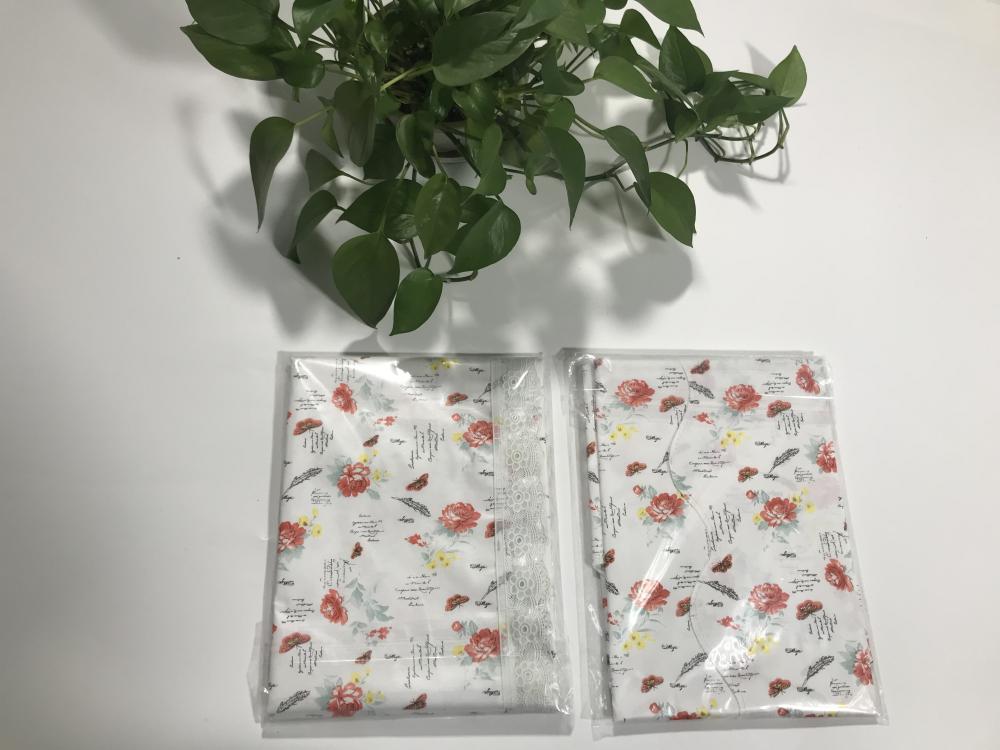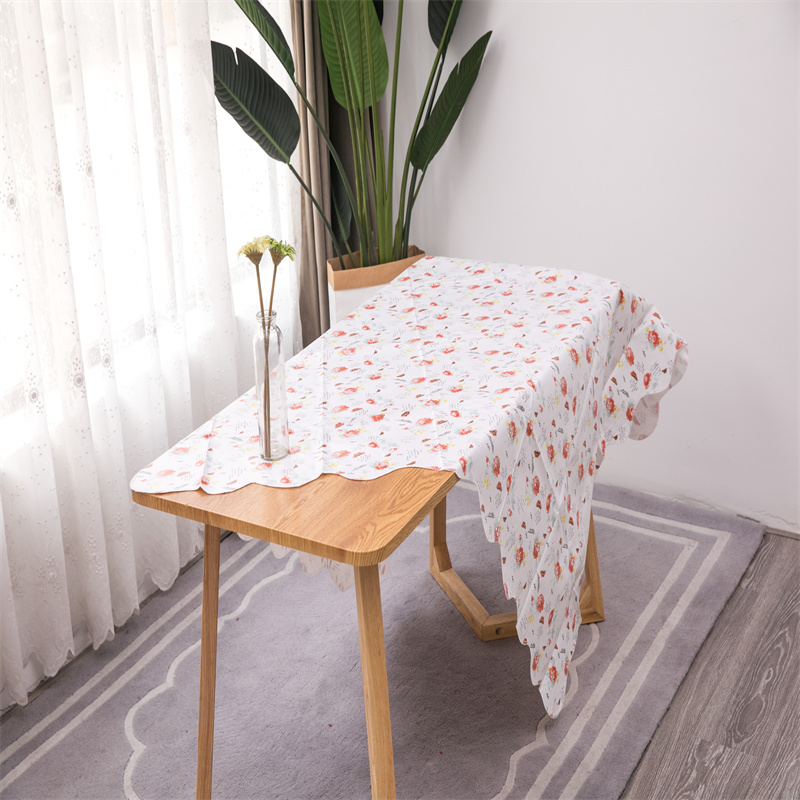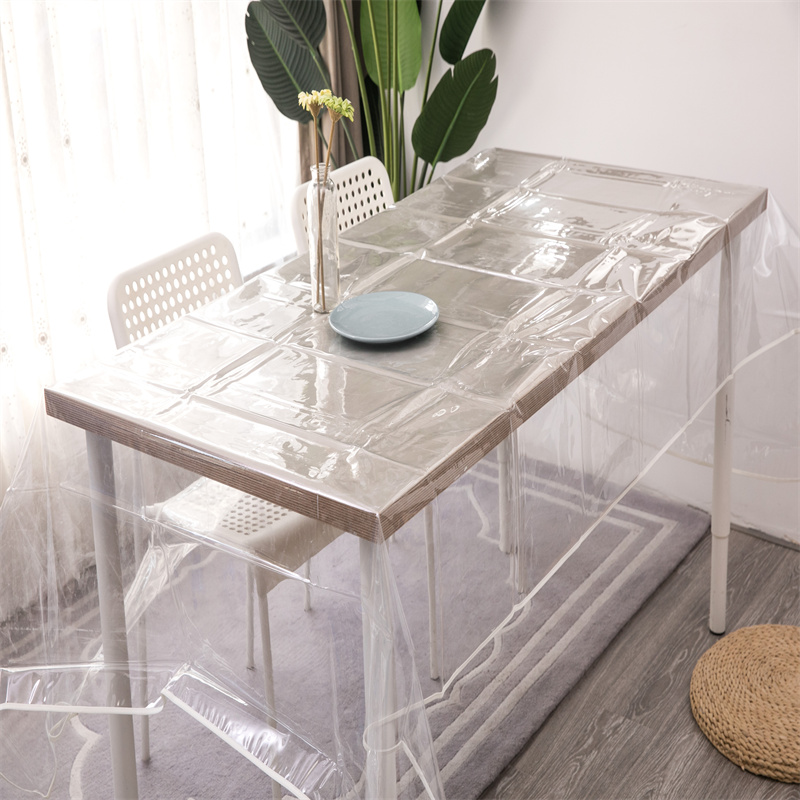On April 30th, the textile industry is a traditional pillar industry of China's national economy and an important civilian production industry. It is also an industry with obvious international competitive advantages. The relevant person in charge of the Industry Coordination Department of the National Development and Reform Commission pointed out that the most prominent problem facing the textile industry is the shrinking demand in the international market and the pressure on the domestic market. Technological advancement and equipment upgrades need to be supported by the needs of the market in order to reflect their value. Therefore, in order to maintain stable development of the industry, we must first ensure the stability of the market. Among the eight major tasks of industrial restructuring and revitalization proposed in the "Planning", "stabilizing domestic and foreign markets, stabilizing and opening up export markets" has been upgraded to an extremely important position, with particular emphasis on maintaining the stability of the international market share.
The financial crisis hit the export market since the second half of 2008, the global financial crisis has gradually penetrated into the real economy. Recently, the International Monetary Fund (IMF) lowered its global economic forecast in the latest World Economic Outlook. It is expected that the global economy will experience the most serious decline since the Second World War in 2009. The global economy is expected to shrink by 1.3% in 2009, far below the 0.5% increase expected in January, and lower than the 0.5% to 1% decline expected in March. The most direct impact of this economic development on China's textile and garment industry is that the growth of clothing consumption in developed countries will slow down or even negatively increase, and the growth rate of industry exports will continue to slow down.
From the perspective of China's major export markets, the financial crisis has tightened the credit of US financial institutions, and the number of unemployed people has increased rapidly. The US residents accustomed to credit consumption have lost support in terms of consumption growth. The overall decline in consumer spending has led to the market demand for textiles and clothing. Shrinking. In 2008, China’s exports of textiles and clothing to the United States reached US$26.912 billion, a growth rate of 13.38 percentage points year-on-year, accounting for 14.19% of China’s total textile and apparel exports.
Look at the Japanese market again. In the past three years, China's textile and apparel exports to Japan have maintained a small increase. The financial crisis has slowed Japan’s economic growth and market demand has also decreased. In 2008, China's exports of textiles and clothing to Japan totaled US$22.20 billion, accounting for 11.61% of the total, and exports increased by 8.24% year-on-year. The growth rate increased by 4.20% year-on-year, showing a trend of increasing from the previous high to the low.
The EU economic cycle lags behind that of the United States. The impact of the subprime mortgage crisis is not obvious in 2008. In addition, the EU has lifted import restrictions on some of our textiles. Therefore, in 2008, China’s exports of textiles and clothing to the EU continued to grow at a high speed, with exports reaching 399.26. Billion dollars, an increase of 36.66%, accounting for 21.06% of total exports. However, with the rapid appreciation of the renminbi against the euro and the gradual deepening of the financial crisis, China's textile and apparel exports to Europe showed signs of weak growth. Exports to Europe are the main driving force for China's textile and apparel export growth. The slowdown in export growth to Europe has intensified the overall export slowdown.
Opportunities to seize rigid demand Although export pressures have increased, textiles are still an industry with obvious competitive advantages in China. From the perspective of trade patterns, the proportion of general trade increased from 55.7% in 2000 to 69.5% in 2008, of which the proportion of textiles in general trade reached 74.1%, and the general trade in clothing reached 66.8%, indicating that the self-supporting ability of China's textile industry chain is increasing. .
From the perspective of yarn, fabric and garment exports, international competitiveness continues to increase. From the changes in the international competitiveness coefficient of yarns, fabrics and garments since 2000, it can be seen that the competitiveness of yarns and fabrics in China has grown rapidly, and the competitiveness of garments has been strong. Fabric exports are mostly cotton and chemical fabrics, and these two types of fabrics are the fastest growing products. In 2000, the average price of fabric exports was US$0.79/m, and the average price of garment exports was US$2.51/piece. By 2008, the average export price of fabrics and garments had reached US$1.12/m and US$3.32/piece, respectively. After hard work, China's textile and garment enterprises have greatly improved in terms of technological innovation, product design level and brand development.
Despite the difficulties in the downturn in the export market, we should still actively see that the global industrial division of labor has taken shape, and it is impossible for Europe and the United States to regain the production of labor-intensive manufacturing industries, while China’s export-oriented industries and developed countries’ consumer markets It will also be interdependent for a long time. The financial crisis has the potential to reduce luxury consumption, but daily consumer goods such as textiles and clothing will remain rigid, and consumers are more inclined to choose cheaper products.
Statistics released by the US Department of Commerce's Office of Textiles and Apparel (OTEXA) show that in 2008, the United States imported 3.41% of textiles and clothing from the world, while imports of textiles and clothing from China increased by 1.1% year-on-year. This aspect shows that the overall demand for textiles and clothing in the United States has decreased, but there is still a large demand for cheap and good Chinese products. On the other hand, it also shows that China's textile and garment industry still has strong international competitiveness in the context of increasing costs. Trying to stabilize the international market share and seize the rigid demand is an important guarantee for strengthening the development of the industry and laying a solid foundation for further adjustment.
Implementation of export market diversification strategy In 2008, China's textile and apparel exports exceeded US$1 billion in 38 markets and regions, and the export market diversified. The textile and garment industry is forming a reasonable export market structure by reducing market concentration. At present, the implementation of the diversification strategy is more urgent in the context of shrinking demand in the mainstream market.
For example, the growth of China's yarn exports to Asian and African countries is very prominent. As the weaving capacity of these countries continues to increase, the demand for yarns is also growing rapidly. Among the Asian countries, the situation in Bangladesh is the most typical. In 2008, China's yarn exports to Bangladesh increased by 49.39%. Among African countries, China’s exports of Egyptian yarns have increased by as much as 63.23%. From the perspective of fabric exports, in 2008, China's exports to Bangladesh amounted to 1.245 billion US dollars, an increase of 28.91%; exports to Vietnam 1.106 billion US dollars, an increase of 31.07%; exports to Indonesia 758 million US dollars, an increase of 12.24%.
From the perspective of China's garment exports, the effect of exploring emerging markets is very obvious. In Russia, Kyrgyzstan, Kazakhstan and other countries, clothing consumption has grown quite fast in recent years. In 2008, the fifth largest market for China's garment exports was Russia, with an export value of US$5.598 billion, down 36.79% year-on-year; Kyrgyzstan was the sixth largest market with an export value of US$5.089 billion, a year-on-year increase of 234.94%; Kazakhstan is the eighth largest. In the market, the export value was US$3.022 billion, a year-on-year increase of 44.03%. It can be seen from the above that China is diversifying into the export market, especially for emerging markets such as Russia, Southeast Asia, Central Asia, West Asia, the Middle East, Latin America and Africa. Implementing a diversified market strategy and continuing to increase the development of these emerging markets will become an important choice for us to cope with the shrinking of developed markets and stabilize the export market share.
“Going out†to obtain high-end profits in the value chain In terms of exploiting the international market, “Planning†not only requires the industry to strive to maintain its existing market share, but also clarifies the new task of vigorously guiding enterprises to “go global†and encourage enterprises to Textile and garment production and processing extended to the circulation field, extended to independent brand marketing, improved the status of China's textile industry in the global value chain, and realized the revitalization and upgrading of the textile industry.
According to reports, in the process of “going outâ€, Zhejiang Textile Leading Group, the US-based textile company, not only can independently master the sales and sales of its products in the face of the financial crisis by establishing its own trading company, processing factory and supporting industrial chain in the African market. Successfully circumvented the risks of various trade barriers and exchange rate fluctuations, and brought a steady stream of orders to local SMEs in Zhejiang. Xu Zhiming, chairman of Yuemei Group, said that during the period from 1992 to 2000, Yuemei had been relying on the export of middlemen. The annual self-export was less than 3 million US dollars, and it was often troubled by the default of the trading company.
In 2000, Xu Zhiming established a trading company to operate wholesale in Lagos, the capital of Nigeria. Nigeria's hot weather clothing with a population of 140 million is prone to mildew, so the fabric consumption for clothing is equivalent to the consumption of 500 million people. Because there is no light industry in the area, the printed cloth that Xu Zhiming brought is very tight. He said that the previous company's grey cloths were printed by dyeing factories, foreign trade companies, middlemen, and Nigerian local wholesalers. The profit margin was only 5%. After setting up the sales department in the African market, the intermediate link was reduced. The profit margin of the year increased from 5% to 40%, and the profit rate of some new products even reached 100%. In 2000, Yuemei Group's annual sales revenue was less than 40 million yuan. By 2008, it had reached 2.1 billion yuan, an average annual increase of more than 65%.
Encourage qualified enterprises to “go globalâ€, make full use of domestic and foreign resources, two markets, invest in setting up factories overseas, or adopt acquisition, leasing, joint venture and cooperation to improve the control of the textile terminal market and improve China's textile industry. The position of industry in the global value chain, the optimization of sales, R&D and production in all aspects of the world, and the acquisition of higher-end profits in the value chain are not only the long-term goal of sustainable development of the industry, but also the three-year adjustment of the industry. Revitalization planning priorities.
Pvc Table Cover,Waterproof Pvc Table Cover ,low price, high quality Environmental Pvc Table Cover,Pvc Printed Cover Table Cover, Waterproof, oilproof, heat resistant, wear resistant, non toxic, durable.
Material:PVC
Specification:140*180cm or customized size
Brand name:shangyou
Color:printing ,solid and clear
Weight:customized
Place of origin:Jiangsu China
Feature
1. Waterproof, oilproof, heat resistant, wear resistant, non toxic, durable.
2. Can replace the cotton, fibre or lace tablecloths which are difficult to clean and expensive.
3. Hundreds of attractive designs for your selection.
Packing:pp bags or other
Applied range:Home,hotel,party and so on
Port of loading:Shanghai port ,Ningbo port
Payment terms:T/T
Delivery time:45days
MOQ:3000pcs




Pvc Table Cover,Waterproof Pvc Table Cover,Environmental Pvc Table Cover,Pvc Printed Cover Table Cover
Jiangyin Shangyou Plastic Co.,Ltd. , https://www.shangyouplastic.com